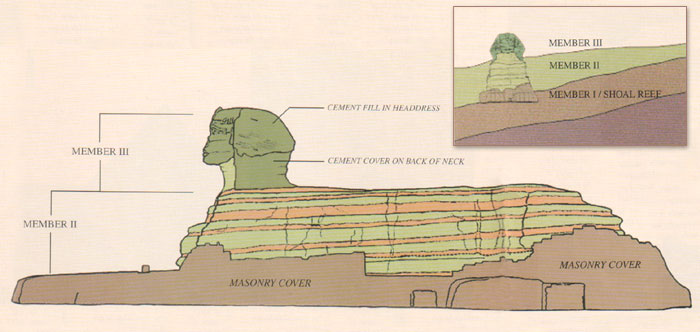Kemet didn't exist until about 5,000 BCE
This like everything else relevant to this discussion has gone over your head. The argument that Dr. Schoch critics saw as their crux for denying the early age of the Sphinx, and subsequent existence of an advanced state prior to the "Neolithic" was their ASSUMPTION that pre-Neolithic populations were not "advanced".
The major fact disputing Dr. Schoch's conclusion, Dr. Lehner said, is the absence of any evidence that a civilization advanced enough to carve the Great Sphinx existed in Egypt from 7000 to 5000 B.C. "If the Sphinx was built by an earlier culture, where is the evidence of that civilization?" he said. "Where are the pottery shards? People during that age were hunters and gatherers. They didn't build cities."
-your source
Gobekli Tepe dating back to 9,000 BC DEBUNKS the crux of their argument that early populations had the knowledge to build advanced monuments. His argument is debunked, because we have proof that populations prior to the 4th millennium BC created advanced monuments.
so there's at least a 7,000 year gap between the migrations and the settlement of the area that was to become Kemet. Calling me names doesn't prove your assertion. Next.....
No No No....The date of Kemet's existence is pushed back into at least 12,000 BC when the Sphinx was created. These populations that left the river Nile, went into Turkey via the Levant, where they also built Gobekli Tepe;
“..one can identify Negroid traits of nose and prognathism appearing in Natufian latest hunters (McCown, 1939) and in Anatolian and Macedonian first farmers, probably from Nubia via the unknown predecesors of the Badarians and Tasians....". (Angel 1972. Biological Relations of Egyptian and Eastern Mediterranean Populations.. JrnHumEvo 1:1, p307
Not to mention that Affad 23, which goes back to a dating range of 15,000-75,000 years ago in Sudan (Nubia) is more proof of the early settlement of Nubia.

"
Affad 23 is an African archaeological site located in alluvial deposits formed by an ancient channel of the Nile in the Affad District of Southern Dongola in northern Sudan.
In 2013,[1] archaeologists from the 'Institute of Archaeology and Ethnology, Polish Academy of Sciences' in Poznań, unearthed the remains of a settlement with numerous postholes, pits and hearths estimated to be 15,000 years old. Previously it was believed that permanent structures were associated with the exodus from Africa and the consequent occupation of regions in Europe and Asia. The position of the site, lithic artefacts collected in 2003[2] and 2012-2014,[3] freshness, refittings and dispersion of the artefacts all suggest that it was a late Middle Stone Age workshop used intermittently and for short periods."
Neither Nubia or Kemet existed so they couldn't have come from there. That's like someone in 1300's France telling a neighbor they came from New York City

 You're a proven clown. You're dismissed for life, and the proof is below.
You're a proven clown. You're dismissed for life, and the proof is below.


